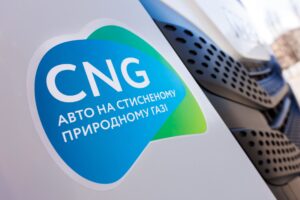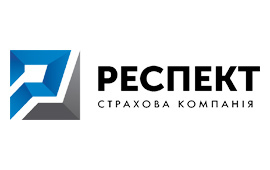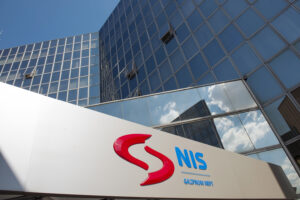
The state-owned enterprise Ukravtogaz, part of the Naftogaz group, has reduced the price of compressed natural gas (CNG) from 42 to 37.80 UAH/m3, or by 10%, effective August 1.
“We would like to inform you that the price of compressed natural gas sold through the AGNC network of Ukravtogaz will be 37.80 UAH per cubic meter, including VAT, starting August 1, 2025,” the company said on its website.
As reported, Ukravtogaz raised the price of CNG from 34.80 to 42 UAH/cubic meter, or by 20.7%, effective August 1, explaining this forced decision by the increase in the purchase cost of natural gas and market changes.
Ukravtogaz is the largest national retailer of environmentally friendly motor fuel in Ukraine. The company produces CNG (compressed natural gas) and sells it through its own network of automobile gas filling stations (AGFS). By the end of 2025, Ukravtogaz plans to expand its network to 38 CNG stations in various regions of Ukraine.
Natural gas is supplied to CNG stations via gas pipelines, where the gas pressure is increased to 20 MPa (200 atm) and then pumped into vehicle cylinders.

Net outflow from Ukraine in 2026 will remain at the 2025 level of 0.2 million people. This worsened migration forecast was included by the National Bank of Ukraine (NBU) in its updated macro forecast, which was also worsened due to expectations of a longer war.
“Given the slow normalization of economic conditions, estimates of migration flows in the coming years have been worsened. It is expected that in 2026, the outflow of migrants will continue at a similar pace to the current one (about 0.2 million people), while the April forecast predicted the return of 0.2 million people,” the National Bank’s inflation report published on its website says.
“Net returns will only begin in 2027 (about 0.1 million people, compared to 0.5 million in the previous forecast),” the NBU added.
At the same time, it left its assumptions for 2025 unchanged: a net outflow of about 0.2 million people is expected.
The NBU report notes that the risks of increased combat activity and shelling of rear regions, occupation of new territories, or a significantly longer war remain significant. If these risks materialize, migration outflows will intensify.
“The active policy of recipient countries’ governments to retain Ukrainians, especially those involved in the labor market, is also a negative risk for the migration forecast,” the National Bank adds.
According to the updated forecast, 5.8 million Ukrainians will remain abroad this year, 6 million next year, and 5.9 million in 2027.
At the same time, an alternative forecast, which assumes a faster end to the war, predicts that next year the number of Ukrainians abroad will fall to 5.6 million, and in 2027 to 5.1 million, which is in line with the April forecast.
As reported, the National Bank of Ukraine worsened its macroeconomic forecast in July: in 2025, economic growth will be 2.1% instead of the previously expected 3.1%, and in 2026-2027, it will be 2-3% instead of 3.7-3.9%.

In January-June 2025, PJSC Insurance Company Respect (Odessa) collected UAH 39.356 million in net premiums, which is 79.5% more than in the same period of 2024.
According to the company’s interim report published in the information disclosure system of the National Securities and Stock Market Commission (NSSMC), its gross premiums for this period amounted to UAH 39.689 million (+73.2%). UAH 333 thousand was transferred to reinsurance (2.9 times less).
In the first two quarters of this year, the company paid out UAH 5.584 million, which is 3.7 times more than in the same period last year.
At the same time, administrative expenses amounted to UAH 269,000, which is 2.3 times higher than in January-June 2024.
The financial result from operating activities of IC “Respect” for the period under review amounted to UAH 5.415 million (2.6 times less), net profit – UAH 7.025 million (2.5 times less).
According to the NSSMC, as of the first quarter of 2025, LLC “KUAA YUG-Invest” (Closed-end Undiversified Venture Investment Fund “Industrial”) owned 67.935% of the insurer’s shares, LLC “Ulublenoe Misto” owned 9.646%, and LLC “Bereg Stroy Service 2017” owned 9.242%.
IC “Respect” has been operating in the Ukrainian market since March 1995. The company’s main risk portfolio is related to the transport sector.

US President Donald Trump has signed an executive order raising tariffs on imports from Canada from 25% to 35% as part of efforts to combat the flow of illegal drugs across the northern border. The new tariffs will take effect on August 1, 2025, according to the White House’s official website.
According to the administration, the decision was made against the backdrop of “Canada’s persistent failure to arrest drug traffickers, seize illegal drugs, or coordinate with U.S. law enforcement agencies.”
“The president’s further actions are necessary and appropriate to protect the lives of Americans, as well as the national security and foreign policy of the United States of America,” the statement said.
The White House recalled that Trump declared a state of emergency under the International Emergency Economic Powers Act (IEEPA) in response to the crisis caused by fentanyl and other illegal drugs.
The preferential treatment for goods covered by the US-Mexico-Canada Agreement (USMCA) remains in place. At the same time, goods that are transshipped to avoid the new tariff will be subject to a separate 40% transshipment duty.
It is noted that in this fiscal year alone, more fentanyl has been seized at the northern border of the United States than in the previous three years combined.

The US has postponed sanctions against Serbian oil company NIS for the last time: a key company could be at risk
The United States has postponed for the fifth and final time the imposition of sanctions against Serbian oil company Naftna Industrija Srbije (NIS), which is controlled by Russia’s Gazprom. According to Reuters, the new exemption from the sanctions list has been extended until the end of August. No further extension is planned after that.
Serbian Energy Minister Dubravka Čedović Handanović said that Belgrade wants to keep oil supplies stable and called “the exclusion of NIS from OFAC sanctions a priority.” She said that dialogue between the US and Russia remains an important condition for this.
NIS is a strategically important company for the Serbian economy. It operates the country’s only oil refinery in Pančevo (near Belgrade), as well as the largest network of gas stations and logistics infrastructure in the fuel sector.
According to the ownership structure:
• 44.9% of NIS shares are owned by Gazprom Neft (Russia),
• 11.3% by Gazprom,
• 29.9% by the Serbian government,
• the rest by minority investors.
It was Russian control over the majority of shares that led to NIS being sanctioned by the US Treasury Department’s Office of Foreign Assets Control (OFAC). Initially, the company was to be completely blocked in January 2025, but since then it has received four temporary licenses to continue operations.
In July 2025, NIS applied for a temporary license for the fifth time and received it for one month, until the end of August. During this period, Gazprom Neft was again reminded of the requirement to withdraw from the Serbian company’s shareholders.
Analysts note that if the sanctions are imposed in full, this could destabilize the fuel market in Serbia, create logistical disruptions, and cause oil prices to rise.
An alternative could be a transfer of control from Russian shareholders to European or Middle Eastern investors, but negotiations on this issue have not yet been officially confirmed.
NIS is a leader in the Serbian petroleum products market and is actively developing its operations in Romania, Bulgaria, and Bosnia and Herzegovina.
The company is also involved in oil and gas exploration and production, lubricant manufacturing, and power generation.
Source: https://t.me/relocationrs/1228

On July 29, Oschadbank announced its intention to conclude a voluntary medical insurance agreement with VUSO (Kyiv).
According to the Prozorro electronic public procurement system, the bid of the sole tender participant, VUSO, amounted to UAH 134.285 million, compared to the expected cost of services under the tender terms of UAH 134.3 million.
As reported, the winner of a similar tender a year ago was also SK “VUSO” with a bid of UAH 114.2 million against the expected cost of UAH 114.8 million.
SK VUSO was founded in 2001. It is a member of the MTIBU and NASU, a participant in the agreement on direct settlement of losses, and a member of the Nuclear Insurance Pool.